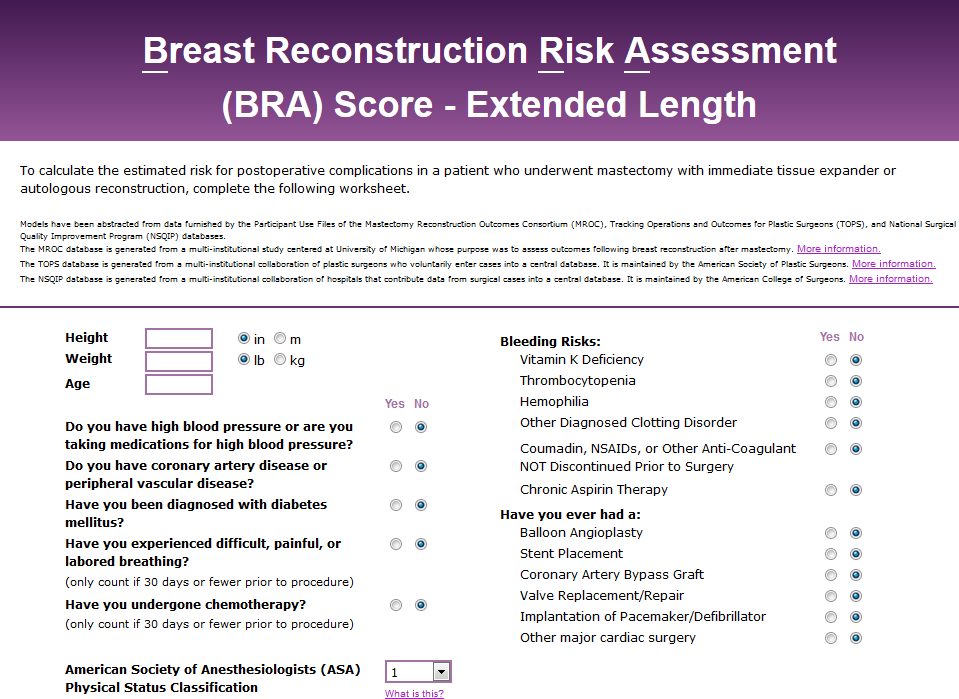Large datasets are crucial for helping surgeons use data to make decisions by offering insight into what the risk may be of a given complication based on a large population. These databases are invaluable because they give information about what percent of people who have a given procedure are at risk for a given complication, but they only offer one number that is based on an average patient. Breast Reconstruction is a case where there are a number of ways to perform the procedure including: one stage v. two stage, implant v. autologous, shaped v. round implant, and pedicle or free flap. Dr. Kim believes that when making recommendations to patients regarding their breast reconstruction that it is important to consider risks, benefits, and cost. These three issues will differ from patient to patient. So these large datasets won’t always have accurate advice for how a surgeon should approach a given patient.
There are plenty of patients who will have a certain breast reconstruction procedure such as a tissue expander/ implant two-stage breast reconstruction, but each patient will have individual concerns, risk factors, and expectations for their result. Dr. Kim considered the many patients he has seen over the years and was interested in creating a more customized risk score. Using a national database of plastic surgery outcomes Dr. Kim and his research team created the BRAscore.org, which is now also available as a mobile site. Using the website a patient is no longer just an average patient whose risk is dependent upon the experiences and risk factors of patients in a database. The BRAscore allows a physician to calculate risk considering how age, smoking, history of bleeding disorders or BMI will affect patients differently.
When you enter the BRAscore.org website you will be able to enter some demographic information (height, weight, age, etc.), as well as comorbidities (diabetes, smoking etc.), some medical history (stent placement, valve replacement etc.), and then information about prior or future chemotherapy or radiation. After entering your information your individualized predictions will be generated. This page will offer information on the predicted risk for a variety of surgical complications depending on the type of reconstruction you undergo. This table is useful, because it can show patients which of the many reconstructive modalities would present the least likelihood for complications.
In the past month the BRAscore website has been used over 200 times by users from the United States, United Kingdom, China, and France. The BRAscore should be used as a tool to better individualize surgical decision making, help to improve the physician’s ability to offer information about risk, and to help form reasonable expectations for the results.
Kim, J. Y., Mlodinow, A. S., Khavanin, N., Hume, K. M., Simmons, C. J., Weiss, M. J., … & Gutowski, K. A. (2015). Individualized risk of surgical complications: an application of the Breast Reconstruction Risk Assessment Score. Plastic and Reconstructive Surgery–Global Open, 3(5), e405.

